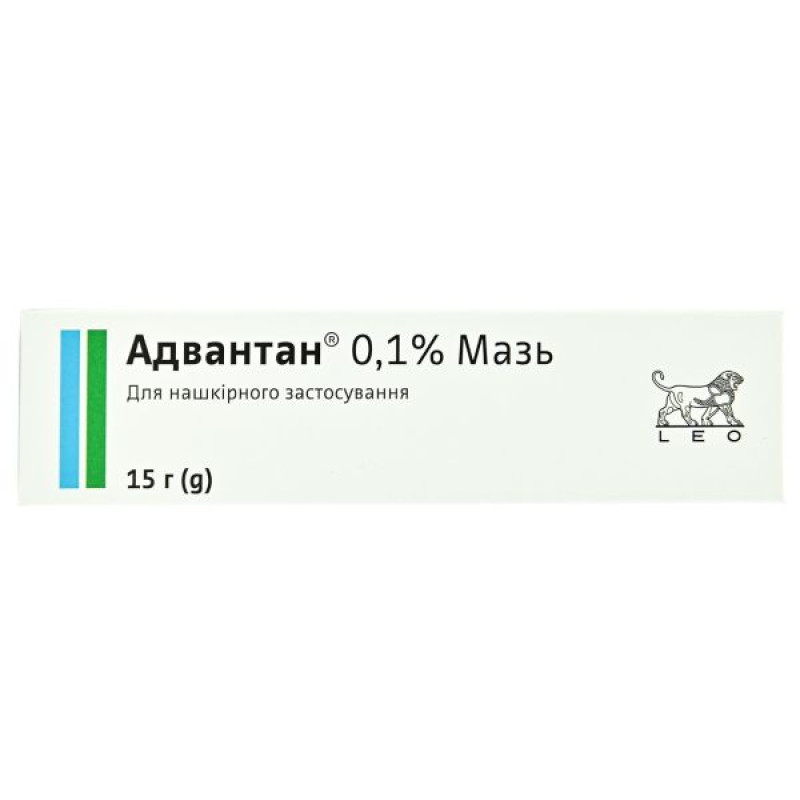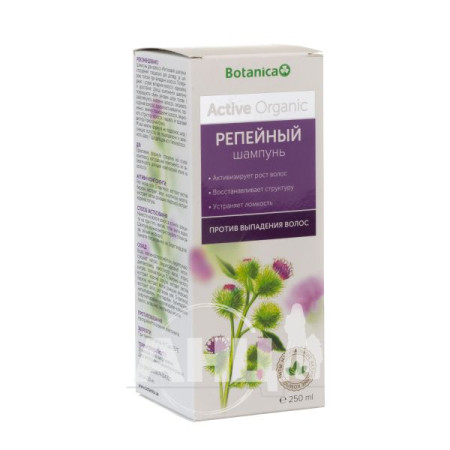Advantan ointment 0.1% tube 15 g

Instructions Advantan ointment 0.1% tube 15 g
Composition
active ingredient: methylprednisolone aceponate;
1 g of ointment contains 1 mg of methylprednisolone aceponate;
excipients: white wax, mineral oil, white soft paraffin, Dehymuls E, purified water.
Dosage form
Ointment.
Main physicochemical properties: opaque ointment of white or yellowish color.
Pharmacotherapeutic group
Dermatological preparations. Corticosteroids for use in dermatology. Simple corticosteroids. Active corticosteroids (group III). Methylprednisolone aceponate. ATX code D07A C14.
Pharmacological properties
Pharmacodynamics
Advantan, when applied topically, suppresses inflammatory and allergic skin reactions, as well as reactions associated with cell hyperproliferation, which helps eliminate both objective symptoms (erythema, edema, maceration) and subjective complaints (itching, burning, pain).
Methylprednisolone is known to bind to intracellular glucocorticoid receptors. This has been clearly demonstrated by its main metabolite, 6α-methylprednisolone-17-propionate, which is formed after cleavage in the skin.
Binding of the steroid-receptor complex to specific regions of the DNA molecule initiates a number of biological effects.
Binding of the steroid receptor complex leads to the induction of macrocortin synthesis. Macrocortin inhibits the release of arachidonic acid and thus suppresses the formation of inflammatory mediators such as prostaglandins and leukotrienes.
The immunosuppressive effect of glucocorticosteroids can be explained by inhibition of cytokine synthesis and an antimitotic effect, which is not yet well understood.
Inhibition of the synthesis of vasodilating prostaglandins or potentiation of the vasoconstrictor effect of adrenaline determines the vasoconstrictor activity of glucocorticosteroids.
Pharmacokinetics
Methylprednisolone aceponate is hydrolyzed in the epidermis and dermis to 6a-methylprednisolone-17-propionate, its major metabolite, which binds more strongly to corticosteroid receptors than the parent product, a clear sign of cutaneous “bioactivation.”
The percentage and extent of transdermal absorption of a topical corticosteroid depend on a number of factors, such as the chemical structure of the compound, excipients, concentration of the compound in the base, conditions of action (surface area treated, duration of action, open or occlusive treatment method) and skin characteristics (type and severity of the disease, anatomical localization, etc.).
The percutaneous absorption of methylprednisolone aceponate in the form of cream, ointment and fat ointment was studied in healthy volunteers. The percutaneous absorption after application of Advantan fat ointment without occlusive dressings (20 g twice daily) for 5 days was approximately 0.35%, which corresponds to a systemic corticosteroid load of 4 μg/kg/day.
When occlusive dressings were used and 15 g of Advantan cream was applied twice daily for 7 days, the average transdermal absorption was about 2.5%, which approximately corresponds to a systemic corticosteroid load of 10 μg/kg/day. The transdermal absorption of methylprednisolone aceponate through skin that had been experimentally damaged by removal of the stratum corneum was significantly higher. In adults with psoriasis and in patients with atopy, the transdermal absorption of methylprednisolone aceponate in the form of a fatty ointment was about 2.5%.
Percutaneous absorption of methylprednisolone aceponate was studied in healthy volunteers after a single application of ≤5 ml of 0.1% Advantan cutaneous solution and in patients with scalp psoriasis after application once daily for 4 weeks.
In none of these studies was systemic exposure of the drug detected. Taking into account the limits of quantification, it was found that the transdermal absorption of methylprednisolone aceponate after application of 0.1% Advantan cutaneous solution to the scalp is less than 10%, which corresponds to a corticosteroid load of less than 4-7 mcg/kg/day.
Once in the bloodstream, the main hydrolysis product of methylprednisolone aceponate, 6a-methylprednisolone-17-propionate, is rapidly conjugated with glucuronic acid and thus inactivated.
Metabolites of methylprednisolone aceponate (major metabolite: 6a-methylprednisolone-17-propionate-21-glucuronide) are excreted from the body mainly in the urine, with a half-life of approximately 16 hours. After intravenous administration, complete excretion through urine and feces occurs within 7 days. No accumulation of the active substance or metabolites in the body is observed.
Indication
Atopic dermatitis (endogenous eczema, neurodermatitis), contact eczema, dyshidrotic, nonspecific eczema, eczema in children.
Contraindication
Skin diseases accompanied by bacterial or fungal infections (see section "Special instructions").
Interaction with other medicinal products and other types of interactions
No data.
Application features
Corticosteroids should be used only in the lowest possible doses, especially in children, and only for the period when it is absolutely necessary to achieve and maintain the desired therapeutic effect.
In the case of treating large areas of skin, the duration of treatment should be clearly determined by the doctor.
In addition, when treating skin diseases accompanied by bacterial and/or fungal infections, additional special treatment is necessary.
Local skin infections may be exacerbated by the use of topical glucocorticoids.
It is necessary to avoid using the drug on the face in case of rosacea or perioral dermatitis (see section "Contraindications").
When using the drug Advantan, avoid getting it in the eyes, on deep open wounds, or on mucous membranes.
When applying Advantan oily ointment to a large surface of the skin (40–90% of the skin surface area) without the use of an occlusive dressing in children, no impairment of the function of the adrenal cortex was observed. After applying Advantan ointment to 60% of the body surface under an occlusive dressing for 22 hours in healthy adults, a decrease in plasma cortisol levels and disruption of circadian rhythms were observed, therefore, in such situations, treatment should be used for the shortest possible necessary period of time.
The risk of side effects is significantly increased when corticosteroids are applied to large areas of the body or for prolonged periods, especially under occlusive dressings. Treatment with an occlusive dressing should be avoided unless indicated. It should be remembered that diapers and nappies, as well as diaper rash, can have the same effect as an occlusive dressing.
When treating large areas of the body surface, the duration of treatment should be as short as possible, as the possibility of absorption or systemic effects cannot be completely ruled out.
As with other corticosteroids, inappropriate use of this medicinal product may mask clinical symptoms.
As with systemic corticosteroid therapy, glaucoma may also develop when applied to the skin (for example, after application in high doses or on a large surface area of the skin for a long period, when using occlusive dressings or when applied to the skin around the eyes).
Vision disorders
Visual disturbances may occur with systemic or topical corticosteroids. If a patient presents with symptoms such as blurred vision or other visual disturbances, they should seek advice from an ophthalmologist to rule out possible causes, including cataracts, glaucoma, or rare conditions such as central serous chorioretinopathy (CSR), which have been reported following the use of systemic or topical corticosteroids.
The use, especially long-term, of drugs for cutaneous application may cause a sensitization reaction. In such cases, treatment should be discontinued and appropriate therapy should be prescribed.
Ability to influence reaction speed when driving vehicles or other mechanisms
Not established. Visual disturbances may occur with the use of systemic or topical corticosteroids (see sections "Adverse reactions" and "Special instructions").
Use during pregnancy or breastfeeding
Pregnancy.
Currently, there is no reliable data on the use of the drug Advantan in pregnant women.
Experimental studies in animals using methylprednisolone aceponate at doses exceeding the therapeutic dose have revealed embryotoxic and/or teratogenic effects.
In general, the use of corticosteroid-containing drugs should be avoided during the first trimester of pregnancy. During pregnancy or breastfeeding, treatment of large areas of skin, long-term treatment, or the use of occlusive dressings should be avoided.
Some epidemiological studies suggest a possible increased risk of cleft palate in newborns whose mothers used systemic corticosteroids in the first trimester of pregnancy.
It is necessary to carefully evaluate the clinical indications and risk-benefit ratio when prescribing the drug Advantan to pregnant women.
Breast-feeding.
Studies in rats have shown that methylprednisolone aceponate is not passed to the newborn via breast milk. However, it is not known whether methylprednisolone aceponate is excreted in human milk, as systemic corticosteroids are found in breast milk. It is not known whether topical administration of Advantan® would result in sufficient systemic absorption of methylprednisolone aceponate to be detected in breast milk.
Advantan ointment should not be applied to the mammary glands during breastfeeding. Prolonged use of the drug, application to large areas of skin, or use under occlusive dressings should be avoided (see section "Special instructions").
Fertility.
There are no data on the effect of the drug on fertility.
Method of administration and doses
Apply the ointment with light massage movements to the affected areas of the skin in a thin layer once a day, unless otherwise prescribed by a doctor.
Advantan ointment contains the necessary amount of fats for the skin and does not block moisture evaporation and heat exchange. Due to its properties, Advantan ointment has a wide range of applications - from moderately exudative to moderately dry skin diseases.
The duration of use should usually not exceed 12 weeks for adults and 4 weeks for children.
Children
Safety has not been established for children aged from birth to 4 months. Before use in children aged from 4 months to 3 years, it is recommended to consult a doctor and assess the benefit/risk ratio. When used in children, no dose adjustment is required when using the drug Advantan ointment. The course of treatment should not exceed 4 weeks. Advantan ointment should not be used under an occlusive dressing. It should be remembered that diapers and nappies can cause the same effect as an occlusive dressing.
Overdose
In case of skin atrophy caused by an overdose of topical medication, treatment should be discontinued. Symptoms usually resolve within 10-14 days.
The results of acute toxicity studies with methylprednisolone aceponate have not revealed any risk of acute intoxication after a single application of excessive amounts of the drug to the skin (application to a large body surface area under conditions conducive to absorption) or after accidental ingestion of the drug.
Adverse reactions
The frequency of adverse reactions observed in clinical trials and listed in the table below is defined according to the MedDRA frequency convention: very common (≥1/10); common (≥1/100, <1/10); uncommon (≥1/1000, <1/100); rare (≥1/10000, <1/1000); very rare (<1/10000), not known (frequency cannot be estimated from the available data; possible adverse reactions not observed in clinical trials).
Blurred vision (see section "Special warnings and precautions for use")
| Classification by organ systems | Often | Infrequently | Unknown * |
| General disorders and administration site conditions | Burning, itching at the application site | Dryness, erythema, vesicles, irritation, eczema, application site papules, peripheral edema | Folliculitis, hypertrichosis, rash, pustules, pain, paresthesia at the application site |
| Skin and subcutaneous tissue disorders | Skin atrophy, ecchymosis, impetigo, excessively oily skin | Acne, telangiectasia, striae, perioral dermatitis, skin fissures, skin discoloration, bacterial cellulitis, contact dermatitis, pyoderma, skin infections, fungal lesions, skin discoloration, allergic skin reaction | |
| On the part of the immune system | Hypersensitivity to the drug | ||
| From the organs of vision |
* Potential adverse reactions that were not observed during clinical studies.
With prolonged use, systemic effects of corticosteroids are possible due to their absorption.
Expiration date
3 years.
Storage conditions
Store at a temperature not exceeding 25 °C out of the reach of children.
Packaging
15 g in a tube, 1 tube in a cardboard box.
Vacation category
According to the recipe.
Producer
LEO Pharma Manufacturing Italy SRL.
Location of the manufacturer and its business address
Via E. Schering, 21, 20090 Segrate (MI), Italy.
There are no reviews for this product.
There are no reviews for this product, be the first to leave your review.
No questions about this product, be the first and ask your question.







